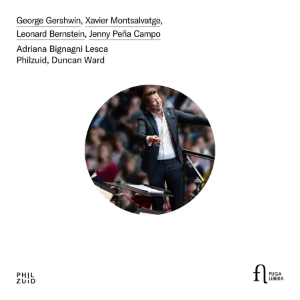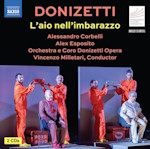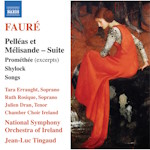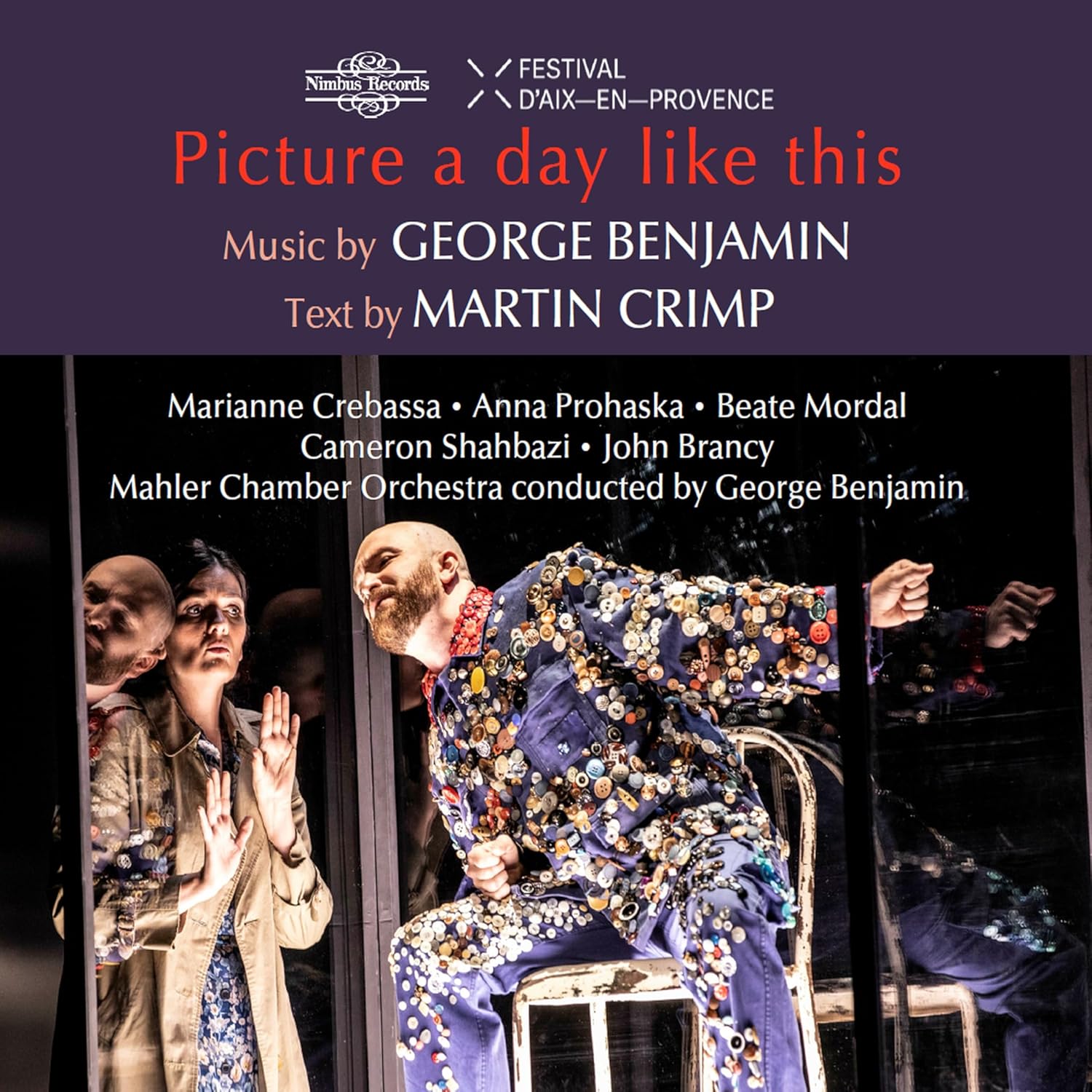
George Gershwin (1898-1937)
Strike Up the Band: Overture (1927)
Xavier Montsalvatge (1912-2002)
Cinco canciones negras (1945)
Leonard Bernstein (1918-1990)
On the Town: Three Dance Episodes (1944)
Jenny Peña Campo (b.1983)
Cuban Suite (2017)
Adriana Bignani Lesca (mezzo-soprano)
Philzuid/Duncan Ward
rec. 2024, Theater aan het Vrijthof Maastricht, Muziekgebouw Eindhoven, PLT Theater Heerlen, The Netherlands
Fuga Libera FUG832 [65]
Now here’s a New Year’s Concert with a difference. Take a British conductor with his Dutch orchestra playing two North American ‘pops’ standards and a pair of Cuban rarities with never a Viennese waltz or Radetskyish march to be heard. Duncan Ward has been the chief conductor of Philzuid – otherwise known as the South Netherlands Philharmonic – since 2021 and this recording combines four performances from three venues given between January 5-10 2024. Another performance given at this time can be viewed on-line to give the curious a sense of the music itself and the performances.
As these are live recordings there are a couple of slight fluffs in the orchestra and the audience’s enthusiastic applause is retained – including an ‘unscheduled’ reaction mid-way through the first movement of the Cuban Suite. That aside, the Fuga Libra engineers have managed to eliminate any extraneous audience noises. As can be seen in the videos Ward conducts with energy and enthusiasm but neither the Gershwin or Bernstein works are given anything more than perfectly good performances. It may be a factor of the venues (quite resonant) or the engineering but the playing, while accurate and skilled in these jazz-influenced works, lacks real character or pizzazz. Brass stabs lack edge or bite, the strings lack tonal weight and lushness and across the orchestra rhythms stay on the polite side of infectious. Nothing is by any means wrong but somehow these performances simply do not sweep the listener up in the Broadway glitz and showbiz glamour that they can. Of course, both are represented by multiple great performances in the catalogue and by that measure these respectable versions simply do not compete.
Strike Up the Band is given in the standard Don Rose concert version. The liner writer has got rather confused relating a well-known story about Gershwin struggling to write the melody of the title song with the overture (which in any case was always compiled once the show – and the songs – had been completed). Indeed the liner is rather lacking in many ways. The tri-lingual booklet is attractively and clearly printed and each piece is reasonably covered. However, there are no lyrics supplied for the song cycle and no biographies about any of the artists. This is a real issue with the second item Xavier Montsalvatge’s Cinco canciones negras. Montsalvatge was a Catalan composer but this cycle of five songs sets Cuban poems and the music itself is likewise influenced by Afro-Carribbean culture. Although these might well be considered Montsalvatge’s best-known work – multiple other versions exist – they are hardly mainstream so the lack of texts or even a detailed description of the songs in the liner leaves the unfamiliar listener at sea. This is somewhat exacerbated by the pronunciation of singer Adriana Bignani Lesca who does not sing with the greatest clarity. Bignani Lesca, a French-trained singer born in Gabon, has a big voice and a commanding presence. This springs out of the speakers but is even more evident when watching the online video above. Her voice has a true contralto richness and weight which suits elements of the folk-like character of some of these settings. Above the stave her voice and vibrato does rather spread and there is a sense of unevenness in projection across her range. A very different approach both vocally – in terms of applied technique – and musically is offered on the superb survey of Montsalvatge’s music on Chandos from Juanjo Mena with Clara Mouriz and the BBC Philharmonic Orchestra. Mouriz has a much lighter voice and her overall interpretation is much subtler and nuanced. The Chandos recording is much more sophisticated than the Fuga Libra engineers can conjure with a result that is more detailed and poised. But that said the primary coloured dynamism of Bignani Lesca does work in this music too and again Philzuid under Duncan Ward provide sympathetic and attentive support. As mentioned above, the concert video includes a performance of this cycle so I would advise potential purchasers to sample Bignani Lesca’s voice there. I just wish the Fuga Libra recording was cleaner and clearer – as before this is by no means ‘bad’ but in comparison just not as good.
The same conclusion is inevitably reached in the following On the Town – Three Dance Episodes. By stopwatch alone this is a very ‘standard’ performance decently played. But everything needs to be tightened up. Underneath the smiling energy of the original show there is a brittle nervous tension. Again the slightly cloudy recording and lack of inner detail compromises the richness of Bernstein’s writing. At the very opening of the first movement – The Great Lover displays himself – the syncopating brass stabs do not stab, the light drum kit ride is all but inaudible. The central Lonely Town – Pas de deux is based on the song that is the emotional heart of the show and is an early example of Bernstein’s genius for writing a ‘big’ tune. The happy ending of Times Square 1944 is not bad – the saxophone solo mellow rather than sleazy – but again there is a distinct feeling that the crucial extra ‘snap’ and collective tightness – expressive as much as technical – is crucially lacking.
If this review so far has dammed by rather faint praise then considerable balance is offered by the last and most substantial work here; Jenny Peña Campo’s Cuban Suite. Both composer and work are new to me. Ward conducted the 2017 premiere played by the Balthasar Neumann Academy and the Cuban-European Youth Academy which sought to bring together young Cuban and European musicians. I suspect those players found this score as challenging to play as it was fun. Havana-born Peña Campo trained initially as a violinist before turning to composition. The Cuban Suite is a substantial and genuinely impressive work. At first glance I did wonder if it would be able to sustain its four-movement 35 minute duration (here allowing for applause). But the reason it does succeed is that Peña Campo creates a quasi symphonic form which although it utilises characteristic Cuban folk-dance forms relies more on painting musical pictures which extend far beyond being just a set of orchestral dances. This despite the outer movements being named after two of the most famous Cuban dances; Mambo and Conga respectively. But it takes the music a full minute to start dancing which it then does with a full complement of latin-american percussion and irresistible rhythms. The second movement Dos Palabras [Two Words] is strongly contrasted from the opening Mambo. In effect this is a concertante movement for solo violin – the complexity and demanding nature of the solo part a clear reflection of Peña Campo’s understanding of the instrument. The solo part is very well played indeed by the uncredited(!) leader of Philzuid who plays with sensual style and considerable technical aplomb. The liner suggests that the two words are “Los quiero” [I love them] and represents “a personal message to [Peña Campo’s] friends” which “provide the inspiration for an intimate love song”. I would not characterise the music like that at all – much as I enjoyed it – there seems to be something more dramatic and unsettling than the suggestion here. Dos Palabras is famously the title of an Isabel Allende short story where the unspoken two words are conjecturally “I love you”. The complexity of this movement suggests the layers of the short story perhaps more than just a plain emotional statement.
Equally fascinatingly ambiguous is the third movement Canto de abuelo [Grandfather’s Song]. Here the liner suggests the inspiration is Santeria – the main Afro-Cuban religion which is a fusion of Catholicism and the beliefs brought over to Cuba by the slaves from the African Yoruba tribe. A key element of the music associated Santeria is to create a state of ecstatic trance. Not having read that before my first listen the impression I had was of some nocturnal jungle scene where frogs croak and snakes rattle in the rather ominous darkness. This is a very atmospheric passage and again the effectiveness and evocativeness of Peña Campo’s scoring is striking. There follows what seemed to me to be a kind of dawn sequence although the climax is probably too sustained and too vehement for such a transient moment. At 12:47 this is by some way the longest movement in the suite but also the most interesting musically. The closing two minutes evoke a quiet processional over which voices sing a hymn-like melody. Again this is strongly atmospheric and suggests that Peña Campo would be able to write effectively for film. If Peña Campo intended a symphonic arch to the work this would be the slow movement. This movement continues directly into the closing festive Conga which the liner explains is representative of the Carnival of Santiago de Cuba. This is the most unbuttoned and direct movement and as such provides an uplifting and buoyant conclusion to the whole work. By no means is she a modernist composer with writing that is communicative and instantly appealing. Interestingly, given the pictorial quality of this suite, it is notable from her list of works that most of her compositions appear to be abstract. Kudos to the programme planners of Philzuid for ‘risking’ an extended unfamiliar work such as this to be part of a New Year’s concert. The warmth and enthusiasm of the audience proves it was a popular choice. Again, the orchestra play well – another mention of the excellence of the solo violin is richly deserved. Of course, as a completely unknown work it is hard to have a sense of how good a performance this is. Given my relative disappointment with the other works there is a nagging question here too. There is an excerpt from a French performance on Peña Campo’s website that suggests there is more to be made of the work. But here the important thing to do is celebrate the music itself which is something of a discovery and one that makes me very keen to explore any more of Peña Campo’s work that has made it onto disc although it appears that this might be the first.
Credit for an unusual and imaginative programme is slightly tempered by the not-quite-top-drawer performances and recording but being introduced to the work of Jenny Peña Campo is the significant benefit of this disc.
Nick Barnard
Buying this recording via a link below generates revenue for MWI, which helps the site remain free




















